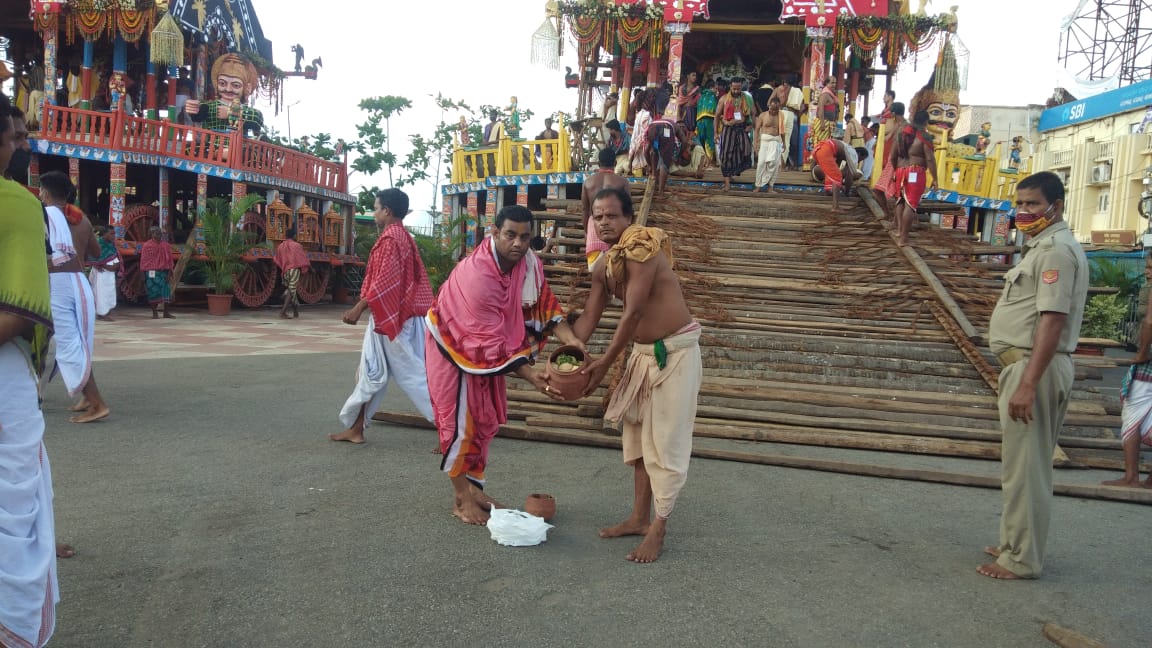Puri: Twelve days after they embarked on their annual sojourn, the Triad will return to the sanctum sanctorum of Shree Jagannath Temple in Puri with the Niladri Bije ritual on Friday evening.
This last ritual of Rath Yatra falls on the Asadha Shukla Paksha Trayodashi tithi and symbolises homecoming of the deities, Lord Jagannath, Lord Balabhadra, Devi Subhadra and Lord Sudarshan. They are taken inside the main temple, via Jay Vijaya entrance, from their respective chariots in a ceremonial procession. After one deity is placed on the Ratna Singhashan, the procession for another deity begins. This is known as ‘Goti Pahandi’.
The idols of Madana Mohana and Ramakrishna are first taken inside the temple followed by Shree Sudarsana, Devi Subhadra, and Lord Balabhadra. Thereafter, Goddess Lakshmi upset for not being allowed to accompany Lord Jagannath to Shree Gundicha Temple on the annual sojourn closes the main door of the temple and refuses to let Him in. An interesting mock banter known as the ‘Bachanika’ breaks out between the servitors representing Goddess Lakshmi and the servitors representing Lord Jagannath in front of the temple. The fight concludes when Lord Jagannath confesses to His mistakes and offers ‘Rasagolas’ to cajole his consort. This is called ‘Manabhanjana’. Goddess Lakshmi accepts His apology and doors are opened for Lord Jagannath, drawing the curtain on the grand annual event.

According to the Record of Rights, this is the duty of Bhitarachha Sebaka. The reference of Rasagola is also found in the late 15th-century Odia Ramayana written by Balaram Das. Also known as Dandi Ramayana or Jagamohana Ramayana, it was composed and sung at the Jagamohana of the 12th-century shrine.
Since 2015, Odisha has been Rasagola Dibasa on Niladri Bije, marking the end of the 12-day Rath Yatra festival, to let people know the history and origin of the sweet dish.


